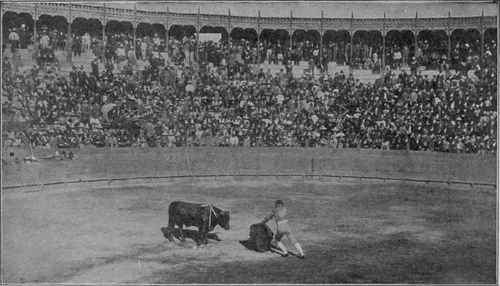How Are Artificial Precious Stones Made?
Description
This section is from the book "The Wonder Book Of Knowledge", by Henry Chase. Also available from Amazon: Wonder Book of Knowledge.
How Are Artificial Precious Stones Made?
The art of manufacturing gems synthetically, that is, by the combination of chemical elements present in the real stone, has reached a high degree of success.
The diamond, which is an allotropic form of carbon, has hitherto resisted attempts to reproduce it of sufficient size to have a commercial value. By dissolving carbon in molten iron and suddenly cooling the molten mass by a stream of water, whereupon the outer part contracts with great force and compresses the interior so that the carbon separates out, Moissan, the French chemist, succeeded in isolating small crystals, none, however, as large as one-twenty-fifth of an inch in diameter.
Experiments in the manufacture of the ruby have met with such success that the synthetic ruby is produced of a size and of a perfection that would place a prohibitive value on the natural stone. The ruby, chemically considered, is crystallized alumina, or oxide of aluminum, with a small percentage of oxide of chromium.
Sapphire is of the same material, differing from the ruby only in color. The ruby owes its fine red color to the presence of oxide of chromium; the sapphire its deep blue to either a lower oxide of chromium or to an oxide of titanium.
Crystallized alumina in the different colors receives different trade names, as Oriental emerald for the green; Oriental topaz for the yellow; Oriental amethyst for the purple; while the water-clear, colorless crystal is known as white sapphire.
The process of manufacture of rubies is carried on with the oxyhydrogen blowpipe, to whose intense heat the powdered alumina with its coloring oxides is subjected. Rubies have been thus produced weighing twelve to fifteen carats when cut. The average weight of the native Burmese ruby is about one-eighth of a carat. The sapphire and the so-called Oriental stones are prepared in the same manner, with the addition of proper coloring matter.
The emerald and opal have not emerged from the experimental stage, although Becquerel, a French chemist, is reported to have produced opals from solutions of silicates with high-tension electric currents.
To be distinguished from synthetic gems are reconstructed stones, which (as yet only done with the ruby) are pieces of the natural stone fused together. They are very brittle.
The pearl is not produced synthetically, but many imitations exist. The Japanese produce them by fastening a piece of mother-of-pearl in the shells of the pearl-oyster and allowing it to remain there for a number of years.
The turquoise, a phosphate of aluminum colored with copper, is not synthetically produced, although various experiments with its manufacture have been made.

Reproduced by permission of The Philadelphia Museum. MaZZANTINI BULL-FlGHT.
The last act in a bull fight, City of Mexico. The bull, tired out by the attacks of the picadores or pikemen, and banderilleros or dart men, whose banderillas or darts are seen planted in the bull's shoulders, faces the matador, armed with the estoque or sword, and carrying the muleta or red flag in his left hand, and about to deliver the death stroke.
Continue to:


